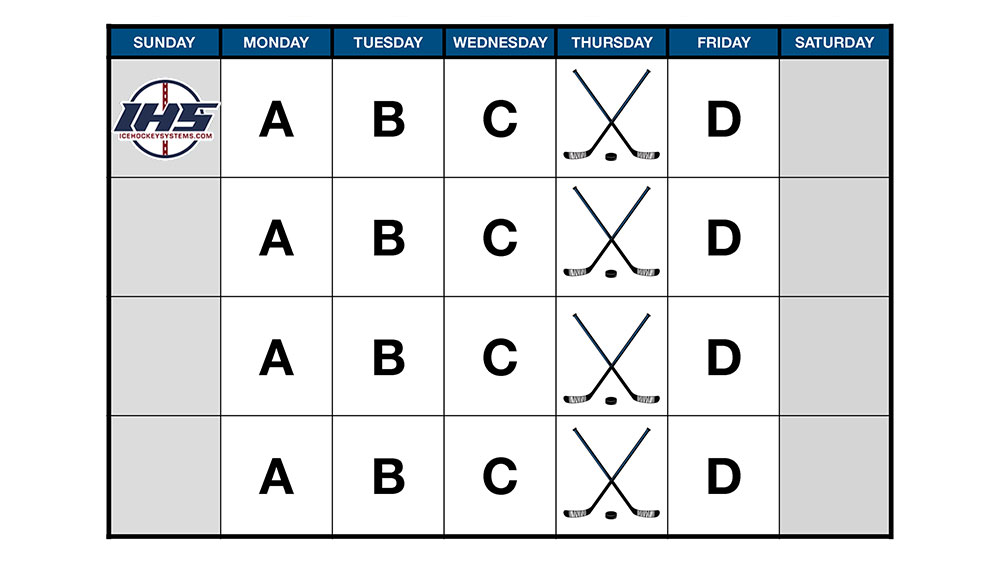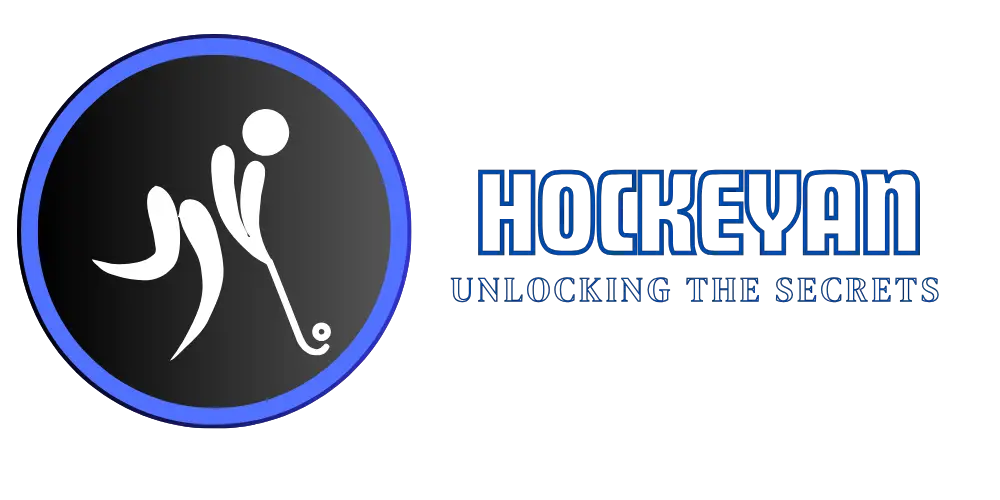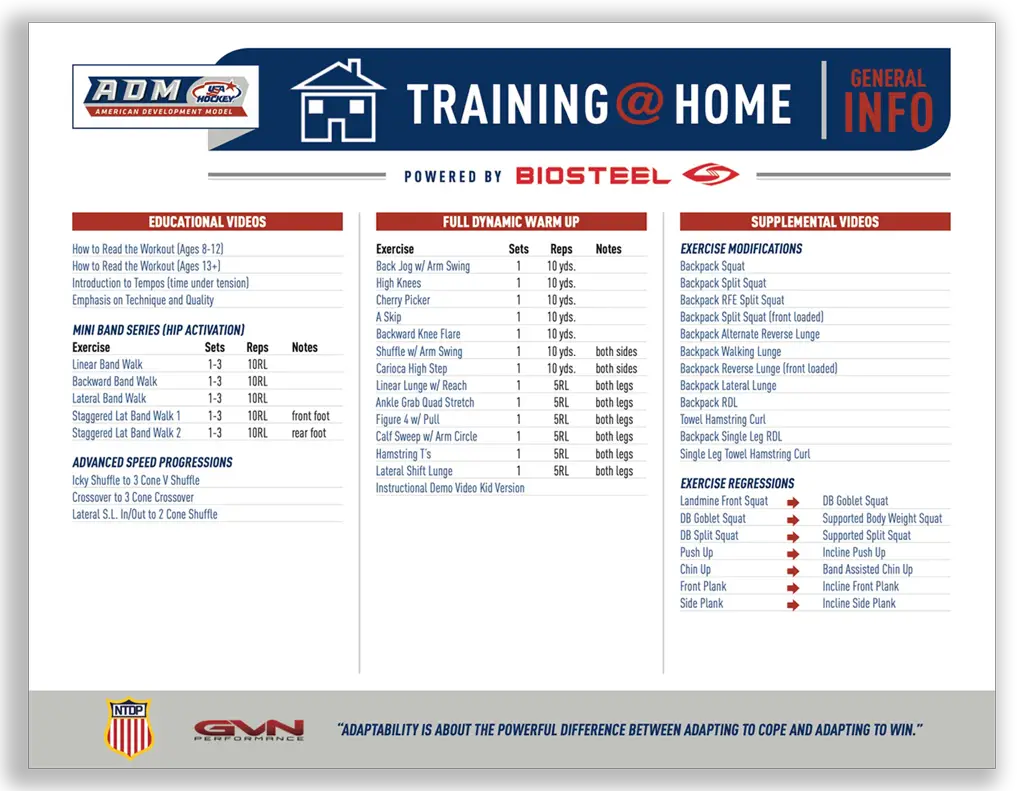Ice hockey workouts focus on building strength, speed, and agility. They improve on-ice performance and reduce injury risks.
Ice hockey is a demanding sport that requires a blend of physical attributes. Workouts tailored for ice hockey players enhance cardiovascular endurance, muscular strength, and explosive power. These exercises often include interval training, plyometrics, and resistance training. Players also benefit from agility drills and core strengthening routines.
Consistent, sport-specific workouts ensure athletes maintain peak performance throughout the season. Proper conditioning not only boosts game performance but also helps in quick recovery from intense physical exertion. Incorporating these elements into a regular training regimen is essential for success on the ice.
Introduction To Ice Hockey Workouts
Ice hockey is a fast-paced and physically demanding sport. Players need strength, speed, and agility. The right workout can improve these skills and enhance performance.
Importance Of Specific Training
Ice hockey workouts are different from regular workouts. They focus on building muscles used in skating and stick handling. This specific training helps players move faster on the ice and maintain balance.
Strength training is crucial for ice hockey players. It helps in preventing injuries. Strong muscles support the body during intense games. Cardiovascular exercises improve endurance, allowing players to stay active longer.
Here is a simple table summarizing the importance of specific training:
| Training Type | Benefit |
|---|---|
| Strength Training | Prevents injuries and builds muscle |
| Cardiovascular Exercises | Improves endurance |
| Agility Drills | Enhances quick movements |
Goals Of Ice Hockey Fitness
Fitness goals in ice hockey focus on several key areas:
- Strength: Build muscle to improve power and prevent injuries.
- Endurance: Enhance stamina to stay active throughout the game.
- Speed: Increase skating speed for better performance.
- Agility: Improve quick movements and balance on the ice.
- Flexibility: Enhance range of motion and reduce muscle strain.
Achieving these goals requires a well-rounded workout plan. Players should combine strength, cardio, and flexibility exercises. This balanced approach ensures overall fitness and peak performance on the ice.
Warm-up Routines
Ice hockey is a fast-paced sport that requires agility, strength, and endurance. A proper warm-up routine is essential to prepare your body for the demands of the game. It helps prevent injuries and enhances performance. Let’s explore some effective warm-up routines that will get you ready for the ice.
Dynamic Stretching
Dynamic stretching involves moving parts of your body through a full range of motion. It increases blood flow and prepares muscles for activity.
- Leg Swings: Stand on one leg and swing the other forward and backwards.
- Arm Circles: Extend your arms and make large circles.
- Lunges: Step forward into a lunge, then push back to the starting position.
Mobility Drills
Mobility drills focus on improving joint flexibility and range of motion. These drills are crucial for ice hockey players.
- Hip Circles: Stand with feet shoulder-width apart and rotate your hips in a circle.
- Torso Twists: Stand with feet shoulder-width apart and twist your torso side to side.
- Ankle Rolls: Lift one foot off the ground and rotate your ankle.
| Drill | Repetitions | Duration |
|---|---|---|
| Hip Circles | 10 each direction | 1 minute |
| Torso Twists | 15 each side | 1 minute |
| Ankle Rolls | 10 each direction | 1 minute |
Strength Training
Strength training is crucial for ice hockey players. It improves performance and reduces injury risk. This workout focuses on building core and lower body strength.
Core Exercises
The core muscles stabilize the body during intense gameplay. Strong core muscles help maintain balance and agility.
- Planks: Hold a plank position for 30 seconds. Repeat 3 times.
- Russian Twists: Sit on the floor with knees bent. Twist your torso side to side while holding a weight.
- Bicycle Crunches: Lie on your back and pedal your legs in the air. Touch your elbow to the opposite knee.
Lower Body Workouts
Lower body strength is vital for powerful skating. These exercises target the legs and glutes.
- Squats: Stand with feet shoulder-width apart. Lower your body until your thighs are parallel to the floor. Do 3 sets of 15 reps.
- Lunges: Step forward with one leg and lower your hips. Keep the front knee over the ankle. Alternate legs for 3 sets of 12 reps each.
- Deadlifts: Stand with feet hip-width apart. Bend at the hips and knees, then lift the weight. Perform 3 sets of 10 reps.
Incorporate these exercises into your routine. They will enhance your ice hockey performance significantly.

Credit: next-level-athletics.com
Power And Explosiveness
Ice hockey demands quick bursts of speed and powerful movements. Building power and explosiveness is crucial for outperforming opponents. These exercises can help you improve your game.
Plyometric Drills
Plyometric drills boost your explosive strength and agility. These exercises are essential for ice hockey players.
- Box Jumps: Jump onto a sturdy box, then step down. Repeat for 3 sets of 10 reps.
- Jump Squats: Squat down, then jump up as high as you can. Perform 3 sets of 15 reps.
- Lateral Bounds: Jump side-to-side, covering as much distance as possible. Do 3 sets of 20 jumps.
Olympic Lifts
Olympic lifts build explosive power and full-body strength. These lifts are perfect for ice hockey players.
- Clean and Jerk: Lift the barbell from the ground to overhead. Perform 4 sets of 5 reps.
- Snatch: Lift the barbell from the ground to overhead in one motion. Do 4 sets of 5 reps.
- Power Clean: Lift the barbell from the ground to the shoulders. Complete 4 sets of 5 reps.
Incorporate these exercises into your routine. Watch your ice hockey performance soar.
Endurance And Conditioning
Ice hockey requires a high level of endurance and conditioning. Players need to maintain their performance throughout the game. This section will cover effective workouts to boost endurance and conditioning.
High-intensity Interval Training
High-Intensity Interval Training (HIIT) is excellent for ice hockey players. It alternates between short, intense bursts of activity and rest. This method improves cardiovascular fitness and endurance.
- Sprints: Run at full speed for 30 seconds. Rest for 30 seconds. Repeat 10 times.
- Burpees: Do as many burpees as possible in one minute. Rest for one minute. Repeat five times.
- Jump Squats: Perform jump squats for 45 seconds. Rest for 15 seconds. Repeat eight times.
Long-distance Cardio
Long-distance cardio is also crucial for ice hockey players. It builds stamina and keeps the heart healthy. Activities like running, cycling, and swimming work well.
| Activity | Duration |
|---|---|
| Running | 30-45 minutes |
| Cycling | 45-60 minutes |
| Swimming | 30-40 minutes |
Incorporating both HIIT and long-distance cardio in your routine will enhance your endurance. This combination ensures you stay strong and fast throughout the game.

Credit: www.youtube.com
Agility And Speed
Ice hockey demands both agility and speed. Players must move quickly and change directions. These skills help players react to the fast-paced game.
Improving agility and speed enhances performance on the ice. Below are some key drills to help with these skills.
Ladder Drills
Ladder drills improve footwork and coordination. They also boost agility and speed.
Here are some common ladder drills:
- High Knees: Lift knees high and move quickly.
- In and Out: Step in and out of each ladder square.
- Side Shuffle: Move sideways through the ladder.
- Hopscotch: Jump in and out with both feet.
Repeat each drill 3 times. This strengthens muscles and enhances coordination.
Sprints And Skating Drills
Sprints build explosive speed. Skating drills improve on-ice agility.
Here are some sprint drills:
- Short Sprints: Sprint for 10-20 meters. Rest and repeat.
- Hill Sprints: Sprint up a hill. Walk down and repeat.
- Interval Sprints: Sprint for 30 seconds. Walk for 30 seconds.
Skating drills focus on quick direction changes and speed:
- Figure 8s: Skate in a figure 8 pattern.
- Blue Line Sprints: Sprint between blue lines on the ice.
- Crossover Drills: Practice crossovers to both sides.
Do each drill for 5 minutes. This builds speed and agility on the ice.
Flexibility And Recovery
Flexibility and recovery are essential for ice hockey players. Proper flexibility helps players move efficiently and avoid injuries. Recovery routines ensure muscles heal and get stronger. Let’s explore some effective methods to improve flexibility and aid recovery.
Static Stretching
Static stretching involves holding a stretch for a period. It helps increase flexibility and prevent muscle stiffness. Here are some key stretches:
- Hamstring Stretch: Sit on the ground and extend one leg. Reach for the toes of the extended leg and hold for 20 seconds. Switch legs.
- Quadriceps Stretch: Stand on one leg, pull the other heel towards your buttock, and hold for 20 seconds. Switch legs.
- Calf Stretch: Place hands against a wall, step one foot back, and press the heel to the floor. Hold for 20 seconds and switch legs.
- Shoulder Stretch: Pull one arm across your chest and hold it with the opposite hand for 20 seconds. Switch arms.
Foam Rolling Techniques
Foam rolling is a form of self-massage. It helps release muscle tension and improve blood flow. Here are some effective foam rolling techniques:
| Technique | Description |
|---|---|
| IT Band Roll: | Lie on your side with the foam roller under your hip. Roll from the hip to the knee, focusing on tight areas. |
| Quad Roll: | Lie face down with the foam roller under your thighs. Roll from hips to knees. |
| Calf Roll: | Sit on the floor with your legs extended and the foam roller under your calves. Roll from ankles to knees. |
| Back Roll: | Lie on your back with the foam roller under your upper back. Roll from your shoulders to mid-back. |
Incorporate these techniques into your routine for better flexibility and faster recovery. Consistency is key for optimal performance on the ice.
Nutrition For Ice Hockey Players
Proper nutrition is essential for ice hockey players. It supports performance, recovery, and overall health. Balanced meals ensure players have the energy and stamina needed for intense games and workouts.
Pre-game Meals
Eating the right food before a game is crucial. It provides the energy needed for peak performance. A balanced meal should include carbs, proteins, and healthy fats.
| Time Before Game | Meal Type | Examples |
|---|---|---|
| 3-4 hours | Main Meal | Grilled chicken, brown rice, steamed vegetables |
| 1-2 hours | Light Snack | Greek yoghurt, banana, whole-grain toast |
Post-workout Nutrition
After a workout, the body needs to recover. Consuming the right nutrients helps with muscle repair and replenishes energy stores.
Here are some tips for post-workout nutrition:
- Consume a combination of protein and carbs within 30 minutes.
- Hydrate with water or a sports drink.
- Include vegetables for vitamins and minerals.
Sample post-workout meals:
- Protein shake with a fruit smoothie
- Turkey sandwich on whole-grain bread
- Salmon with quinoa and spinach
Mental Preparation
Mental preparation is essential for ice hockey players. It sharpens focus and boosts performance. This section explores key techniques to mentally prepare for the game.
Visualization Techniques
Visualization is a powerful tool for athletes. By imagining themselves executing plays perfectly, players can enhance their skills. Visualize yourself making a perfect pass or scoring a goal. It builds confidence and muscle memory.
Use these steps to visualize effectively:
- Find a quiet space.
- Close your eyes.
- Imagine game scenarios vividly.
- Practice daily for best results.
Stress Management
Stress management is crucial in high-pressure sports like ice hockey. Staying calm can make all the difference in a game. Learn to manage stress to maintain peak performance.
Here are some techniques to manage stress:
- Practice deep breathing exercises.
- Engage in regular physical activity.
- Maintain a balanced diet.
- Get enough sleep each night.
These practices can help keep stress levels low. They ensure you’re mentally ready for every game.

Credit: www.icehockeysystems.com
Frequently Asked Questions
What Is An Ice Hockey Workout?
An ice hockey workout is a fitness routine designed to improve strength, agility, and endurance. It focuses on exercises that mimic on-ice movements.
How Often Should I Do Ice Hockey Workouts?
For optimal performance, aim to do ice hockey workouts 3-4 times a week. Consistency is key.
What Exercises Are Best For Ice Hockey Players?
Best exercises include squats, lunges, and plyometrics. These improve lower body strength and explosiveness, essential for hockey.
Can Ice Hockey Workouts Prevent Injuries?
Yes, they can. Strengthening muscles and improving flexibility reduces the risk of injuries. Always include a proper warm-up.
Conclusion
Achieving peak performance in ice hockey requires a dedicated workout routine. Focus on strength, agility, and endurance to excel. Incorporate these exercises into your regimen for the best results. A balanced approach ensures you stay competitive and injury-free. Keep pushing your limits and watch your game improve significantly.




